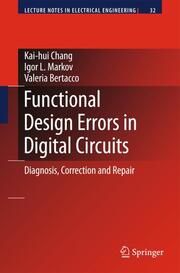Detailansicht
Functional Design Errors in Digital Circuits
Diagnosis Correction and Layout Repair - Lecture Notes in Electrical Engineering 32, Lecture Notes in Electrical Engineering 32
ISBN/EAN: 9781402093647
Umbreit-Nr.: 1369663
Sprache:
Englisch
Umfang: xxiv, 200 S.
Format in cm:
Einband:
gebundenes Buch
Erschienen am 10.12.2008
Auflage: 1/2009
€ 160,49
(inklusive MwSt.)
Nachfragen
